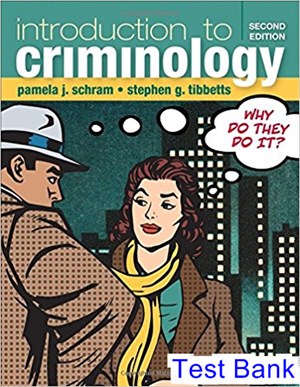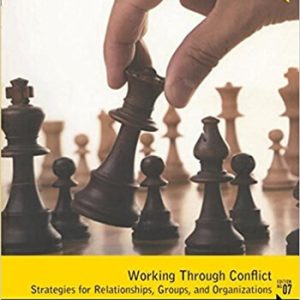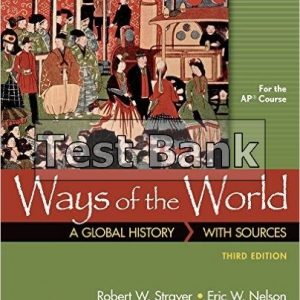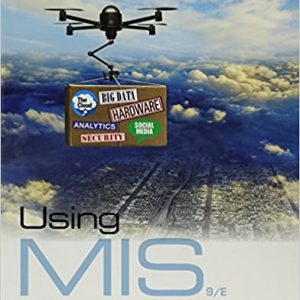Instant download Introduction to Criminology Why Do They Do It 2nd Edition Schram Test Bank pdf docx epub after payment.

Product details:
- ISBN-10 : 1506347568
- ISBN-13 : 978-1506347561
- Author: Pamela J. Schram
Introduction to Criminology, second edition offers a contemporary and integrated discussion of the key theories that help us understand crime in the 21st century. With a focus on why offenders commit crimes, authors Pamela Schram and Stephen Tibbetts skillfully engage students as they help them explore the fundamentals of criminology thorough real-world cases and examples. To better align with how instructors actually teach this course, coverage of crime typologies have been integrated in with the theory chapters.
Unlike the others on the market, Introduction to Criminology discusses issues of diversity in each chapter. Transnational comparisons regarding crime rates and the way other countries deal with crime make the text more universal and will attract instructors who take a global approach to criminology. Additionally, this text offers an entire chapter on feminist criminology, a topic often overlooked in the competitors.
Table of contents:
Chapter 1: Introduction to Criminology
Introduction
Key Concepts to Understanding Criminology
The Criminal Justice System
Criminology Theory
Victimology
Conclusion
Key Terms
Discussion Questions
Web Resources
Chapter 2: Measuring Crime
Introduction
Crime Data From Law Enforcement Agencies
Crime Data from Victims of Crime: The National Crime Victimization Survey
Crime Data from Self-Report Surveys
Additional Approaches to Collecting Crime Data
Conclusion
Key Terms
Discussion Questions
Web resources
Chapter 3: Classical School of Criminology Thought
Introduction
Pre-Classical Perspectives of Crime and Punishment
The Age of Enlightenment
The Classical School of Criminology
Impact of Beccaria’s Work on Other Theorists
The Neoclassical School of Criminology
Loss of Dominance of Classical/ Neoclassical Theory
Policy Implications
Conclusion
Summary of Theories in Chapter 3
Key Terms
Discussion Questions
Web Resources
Chapter 4: Contemporary Classical and Deterrence Research
Introduction
Rebirth of Deterrence Theory and Contemporary Research
Rational Choice Theory
Routine Activities Theory
Policy Implications
Conclusion
Summary of Theories in Chapter 4
Key Terms
Discussion Questions
Web Resources
Chapter 5: Early Positivism
Introduction
Early Biological Theories of Behavior
Physiognomy
Lombroso’s Theory of Atavism and Born Criminals
AFTER Lombroso: The IQ-Testing Era
Body Type Theory: Sheldon’s Model of Somatotyping
Policy Implications
Case Study Revisited: Javier
Conclusion
Summary of Theories in Chapter 5
Key Terms
Discussion Questions
Web Resources
Chapter 6: Modern Biosocial Perspectives of Criminal Behavior
Introduction
Nature Versus Nurture: Studies Examining the Influence of Genetics and Environment
Cytogenetic Studies: The XYY Factor
Hormones and Neurotransmitters: Chemicals That Determine Criminal Behavior
Brain Injuries
Central and Autonomic Nervous System Activity
Biosocial Approaches Toward Explaining Criminal Behavior
Policy Implications
Conclusion
Summary of Theories in Chapter 6
Key Terms
Discussion Questions
Web Resources
Chapter 7: Psychological/ Trait Theories of Crime
Introduction
Early Psychological Theorizing Regarding Criminal Behavior
John Bowlby: Attachment Theory
Mental Health and the Criminal Justice System
Conclusion
Summary of Theories in Chapter 7
Key Terms
Discussion Questions
Web Resources
Chapter 8: Social Structure Theories of Crime I
Introduction
Early Theories of Social Structure: Early to Late 1800s
Durkheim and the Concept of Anomie
Merton’s Strain Theory
Variations of Merton’s Strain Theory
General Strain Theory
Summary of Strain Theories
Policy Implications of Strain Theory
Conclusion
Summary of Theories in Chapter 8
Key Terms
Discussion Questions
Web Resources
Chapter 9: Social Structure Theories of Crime II
Introduction
The Ecological School and the Chicago School of Criminology
Shaw and Mc Kay’s Theory of Social Disorganization
Cultural and Subcultural Theories of Crime
Criticisms of Cultural Theories of Crime
Policy Implications
Conclusion
Summary of Theories in Chapter 9
Discussion Questions
Web Resources
Key Terms
Chapter 10: Social Process and Control Theories of Crime
Introduction
Learning Theories
Differential Reinforcement Theory
Psychological Learning Models
Neutralization Theory
Control Theories
Early Control Theories of Human Behavior
Early Control Theories of Crime
Modern Social Control Theories
Integrated Social Control Theories
A General Theory of Crime: Low Self-Control
Conclusion
Summary of Theories in Chapter 10
Key Terms
Discussion Questions
Web Resources
Chapter 11: Labeling Theory and Conflict/Marxist/ Radical Theories of Crime
Introduction
Labeling Theory
Foundation of Labeling Theory
Evaluating Labeling Theory
Conflict Perspectives
The Conservative (Pluralist) Conflict Perspectives
The Radical Conflict Perspectives
Additional Explanations of Crime Using a Marxist Framework
Evaluating Conflict Theories
Additional Critical Theories
Policies Related to Labeling and Conflict Theories of Crime
Conclusion
Summary of Theories in Chapter 11
Key Terms
Discussion Questions
Web Resources
Chapter 12: Feminist Theories of Crime
Introduction
Feminist Perspectives on Gender
Traditional Theories of Female Crime
Feminist Critiques of Previous Research Studying Women and Crime
Liberation Thesis
Power-Control Theory
Feminist Perspectives on Understanding Crime and Criminal Behavior
Critiques of Feminist Theories
Policies Based on Feminist Theories of Crime
Conclusion
Summary of Theories in Chapter 12
Key Terms
Discussion Questions
Web Resources
Chapter 13: Developmental/ Life-Course Perspectives criminality
Basic Concepts and Early Developmental Theory
Antidevelopmental Theory: Low Self-Control Theory
Modern Developmental/Life-Course Perspectives
Policy Implications
Conclusion
Summary of Theories in Chapter 13
Key Terms
Discussion Questions
Web Resources
Chapter 14: White-Collar Crime, Organized Crime, and Cybercrime
Introduction
What is White-Collar Crime?
Definitions and History of White-Collar Crime
Incidence and Impact of White-Collar Crime on Society
Types of White-Collar Crime
Theoretical Explanations of White-Collar Crime
What is Organized Crime?
Criminal Justice Responses to Organized Crime
What is Cybercrime?
Conclusion
Key Terms
Discussion Questions
Web Resources
Chapter 15: Hate Crimes, Terrorism, and Home land Security
Introduction
What Is a Hate Crime?
Violent Crime Control and Law Enforcement Act of 1994
Church Arson Prevention Act of 1996
Campus Hate Crimes Right to Know Act of 1997
Matthew Shepard and James Byrd, Jr., Hate Crimes Prevention Act of 2009
Model State Legislation: Hate Crimes/ Violence Against People Experiencing Homelessness
Multicide
School Attacks
Disparity in Rates of Committing Multicide Across Race and Religious Ideology
What Is Terrorism?
Financial Support
Influence of the Media
Domestic Terrorism
What Is Homeland Security?
Definition of Homeland Security
Homeland Security Organizational Network
Bureaucratic Problems and Solutions
Issues Related to Civil Liberties
Human Rights
The Constitution
Policy Implications
Conclusion
Key Terms
Discussion Questions
Web Resources
Chapter 16: Drugs and Crime
Introduction
Commonly Abused Drugs
Trends of Drug Use
The Drug-Crime Link
Modern Policies Related to Reducing Drug Use
Recommendations for Future Policies
Conclusion
Key Terms
Discussion Questions
Web Resources
Glossary
Notes
Index





